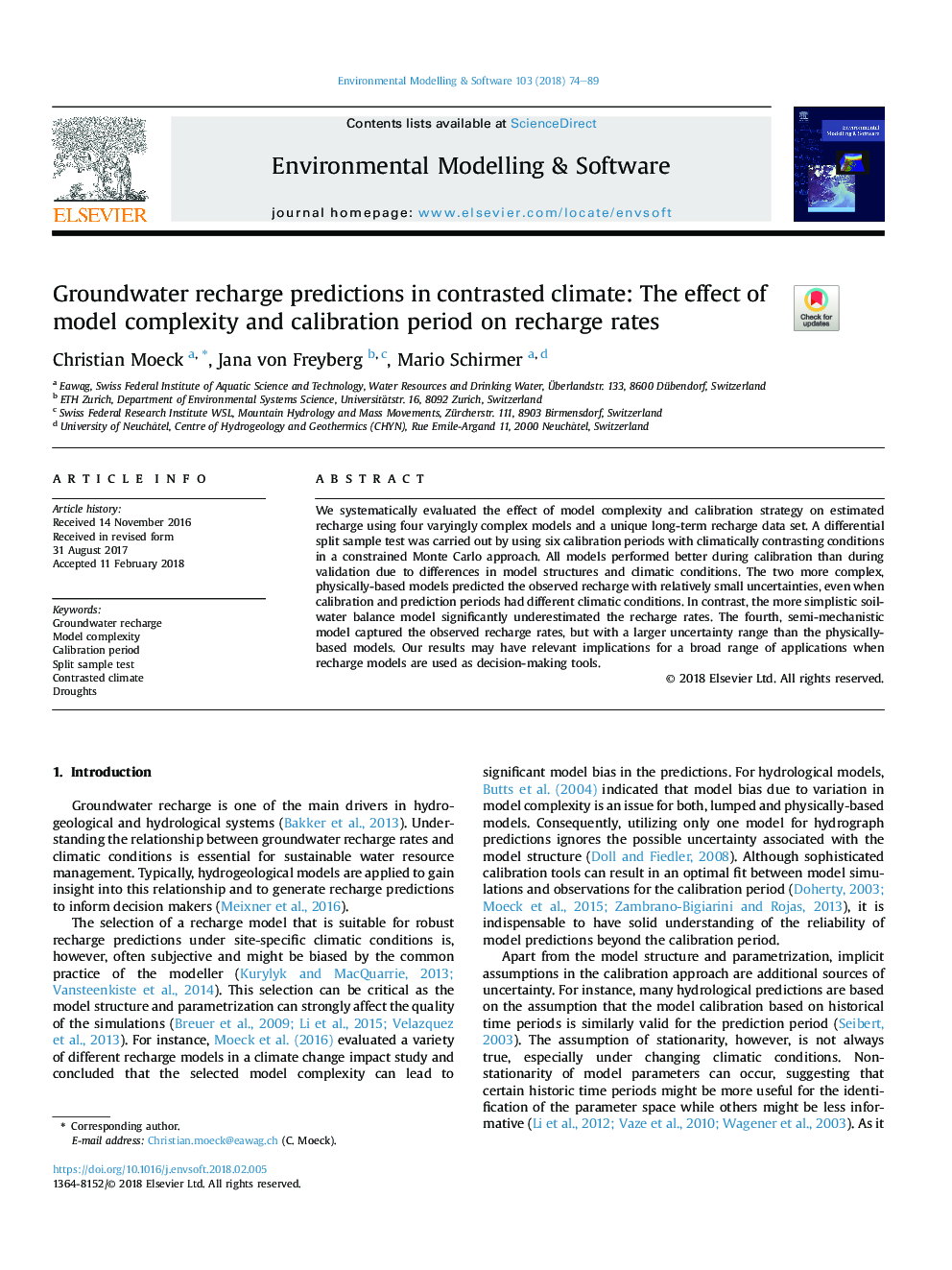| Article ID | Journal | Published Year | Pages | File Type |
|---|---|---|---|---|
| 6962081 | Environmental Modelling & Software | 2018 | 16 Pages |
Abstract
We systematically evaluated the effect of model complexity and calibration strategy on estimated recharge using four varyingly complex models and a unique long-term recharge data set. A differential split sample test was carried out by using six calibration periods with climatically contrasting conditions in a constrained Monte Carlo approach. All models performed better during calibration than during validation due to differences in model structures and climatic conditions. The two more complex, physically-based models predicted the observed recharge with relatively small uncertainties, even when calibration and prediction periods had different climatic conditions. In contrast, the more simplistic soil-water balance model significantly underestimated the recharge rates. The fourth, semi-mechanistic model captured the observed recharge rates, but with a larger uncertainty range than the physically-based models. Our results may have relevant implications for a broad range of applications when recharge models are used as decision-making tools.
Related Topics
Physical Sciences and Engineering
Computer Science
Software
Authors
Christian Moeck, Jana von Freyberg, Mario Schirmer,
